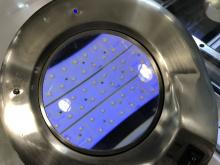Submitted by Siteguru on Tue, 08/01/2017 - 11:23

Conformal coatings are simply coatings that are used to protect printed circuit boards. They form a barrier between the environment and the board and its’ electronic components, but the protections go far beyond that.
What They Do
Originally, coatings were used to protect against moisture and debris, preventing corrosion of the solder contacts and the traces within the assembly. They also provided additional protections from thermal and mechanical shock, so assemblies that are required to function in difficult environments benefit from coating. The coating mechanically strengthens the component connections and provides insulating properties for the assembly.
Now, in addition to the afore mentioned functions of conformal coatings, one of the top advantages is the gain is usable board surface space. Top engineers lead innovation and the consumers desire for smaller and smaller electronic devices. They continue to add more and more functionality to smaller devices, all in an effort to be first to market with a better version. These smaller electronic devices require smaller printed circuit boards and even smaller surface mount components, which are tightly placed on the boards. Needless to say, component spacing is critical. If components are placed too close, conduction may occur. This is when heat or electricity is unintendedly transmitted to adjoining components because of their close proximity. These low voltage electronic components are super sensitive and failure can occur if protective measures are not utilized. Coatings allow engineers to squeeze more components into a smaller area by providing additional insulating properties between components, which eliminates conduction concerns when boards are properly coated. So, coatings have become more and more important as our favorite devices shrink.
Best Coating Type & Method
There are several types of coatings used in printed circuit board protection, and development engineers typically determine the type that best fits the application of their product. The most commonly used coating is acrylic because it is easily placed, cured, removed, and replace if repairs are needed. Other coating types are not as easily removed, i.e. silicones, polyurethanes, and UV cure coatings. Each provides specific advantages, but they are not commonly used.
As for the coating method, we prefer automated robotic application equipment. This equipment is programmed utilizing the same data used to program high-speed pick and place equipment. Once programmed, the machine knows the board construction and the placement of each component. They can be programmed to target certain components, certain areas, or they may coat the entire board, all based on the product requirement. The machine controls the flow and placement of the coating with precision, eliminating human error. The machine can be set up to apply a 50 μm coating, which is the measure of a coating after curing takes place, and it takes care of the rest. Our procedures require that each board is visually inspected under UV light to ensure proper coating before curing. I believe machine coating is the most efficient method for most applications, but of course, there are always exceptions.
